The Chinese Nationalist Party’s (KMT) escape from China in 1949 following the civil war and its subsequent defense alliance with the US had the unintended benefit of introducing Taiwanese artists to the theories and practices of emerging American and European art. Like many young artists of his generation, Lee Hsi-chi (李錫奇) eagerly absorbed these new styles, creating abstract expressionist paintings using lacquer. Yet as his use of materials suggests, Lee didn’t surrender to Western art forms. Rather he combined them with Eastern aesthetics — a fusion that is apparent in Oriental: The Elegance of Han Dynasty (漢采本位), a retrospective exhibition currently on view at MOT/Arts. The title stems from Lee’s close study of Han Dynasty architecture, particularly its forms, symbols and materials. In these paintings, Lee carefully manipulates lines and spatial planes to create depth and distance. The exhibition not only illustrates the maturity of an important Taiwanese artist, but also gives the viewer a sense of the development of modern painting in Taiwan.
■ MOT/Arts, 3F, 22, Fuxing S Rd Sec 1, Taipei City (台北市復興南路一段22號3樓), tel: (02) 2751-8088. Open daily from 11:30am to 8pm
■ Until March 3
.jpg)
Photo courtesy of MOT/Arts
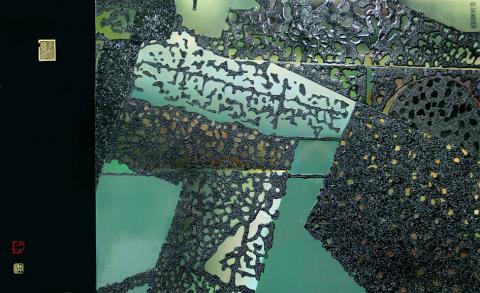
Photo courtesy of MOT/Arts
.jpg)
Photo courtesy of MOT/Arts
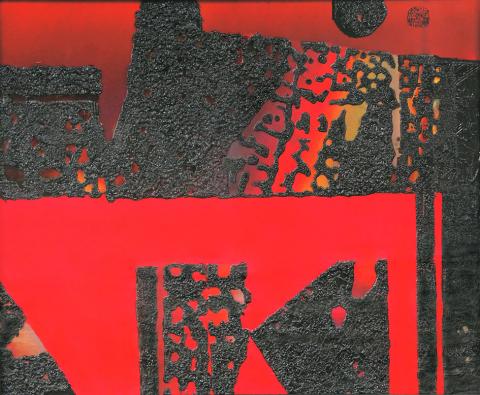
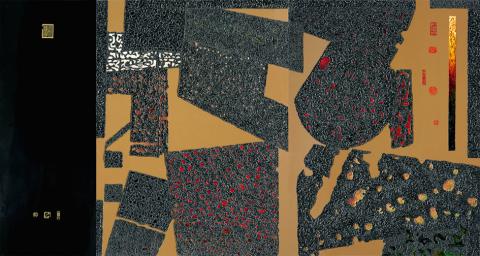
Photo courtesy of MOT/Arts
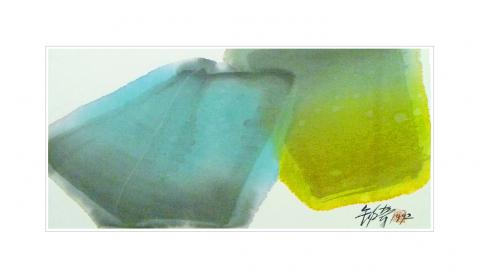
Photo courtesy of MOT/Arts

With one week left until election day, the drama is high in the race for the Chinese Nationalist Party (KMT) chair. The race is still potentially wide open between the three frontrunners. The most accurate poll is done by Apollo Survey & Research Co (艾普羅民調公司), which was conducted a week and a half ago with two-thirds of the respondents party members, who are the only ones eligible to vote. For details on the candidates, check the Oct. 4 edition of this column, “A look at the KMT chair candidates” on page 12. The popular frontrunner was 56-year-old Cheng Li-wun (鄭麗文)

“How China Threatens to Force Taiwan Into a Total Blackout” screamed a Wall Street Journal (WSJ) headline last week, yet another of the endless clickbait examples of the energy threat via blockade that doesn’t exist. Since the headline is recycled, I will recycle the rebuttal: once industrial power demand collapses (there’s a blockade so trade is gone, remember?) “a handful of shops and factories could run for months on coal and renewables, as Ko Yun-ling (柯昀伶) and Chao Chia-wei (趙家緯) pointed out in a piece at Taiwan Insight earlier this year.” Sadly, the existence of these facts will not stop the

Oct. 13 to Oct. 19 When ordered to resign from her teaching position in June 1928 due to her husband’s anti-colonial activities, Lin Shih-hao (林氏好) refused to back down. The next day, she still showed up at Tainan Second Preschool, where she was warned that she would be fired if she didn’t comply. Lin continued to ignore the orders and was eventually let go without severance — even losing her pay for that month. Rather than despairing, she found a non-government job and even joined her husband Lu Ping-ting’s (盧丙丁) non-violent resistance and labor rights movements. When the government’s 1931 crackdown
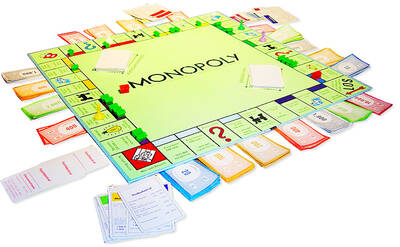
The first Monopoly set I ever owned was the one everyone had — the classic edition with Mr Monopoly on the box. I bought it as a souvenir on holiday in my 30s. Twenty-five years later, I’ve got thousands of boxes stacked away in a warehouse, four Guinness World Records and have made several TV appearances. When Guinness visited my warehouse last year, they spent a whole day counting my collection. By the end, they confirmed I had 4,379 different sets. That was the fourth time I’d broken the record. There are many variants of Monopoly, and countries and businesses are constantly